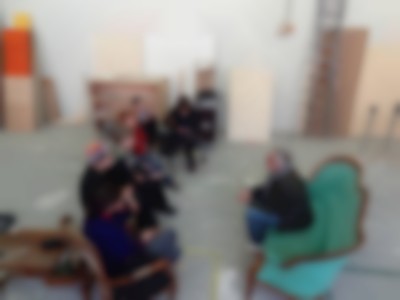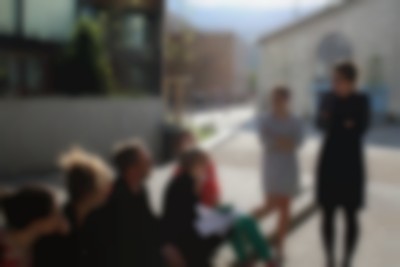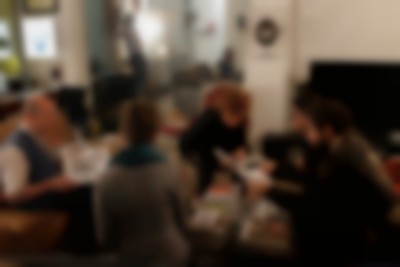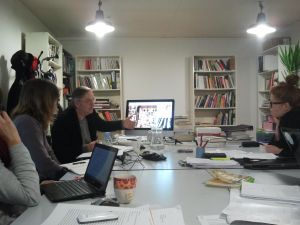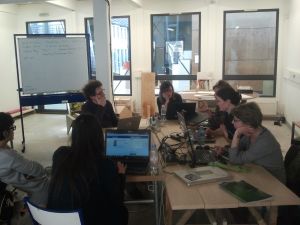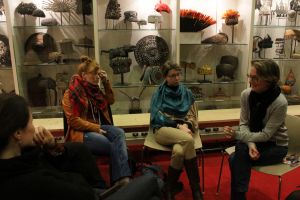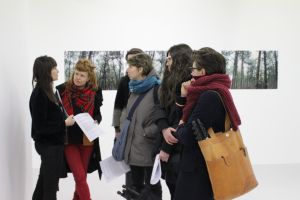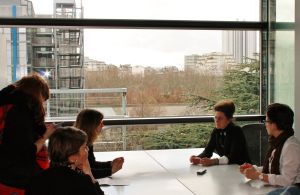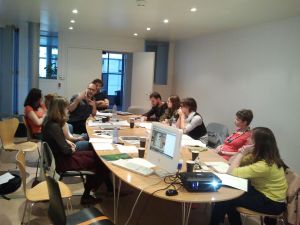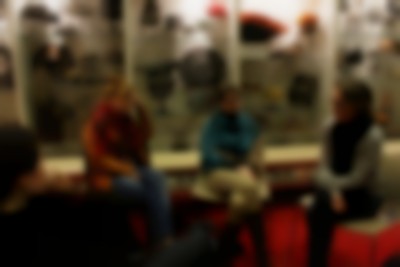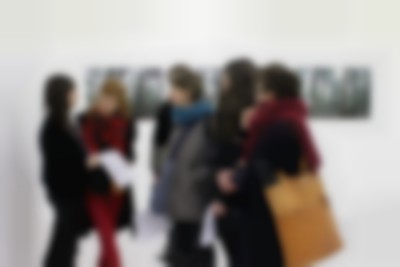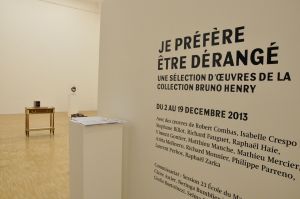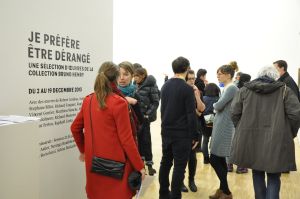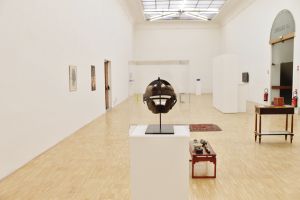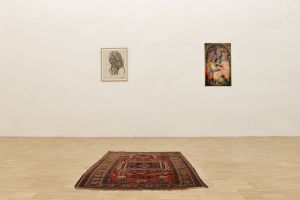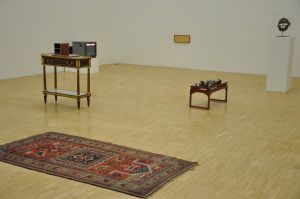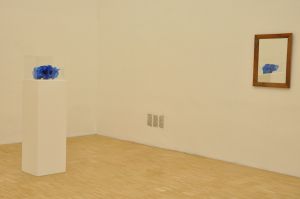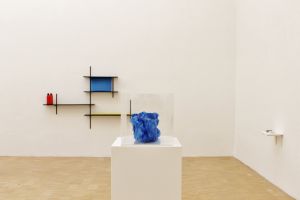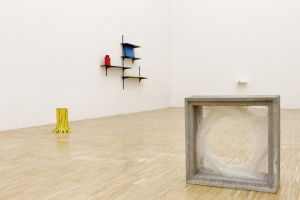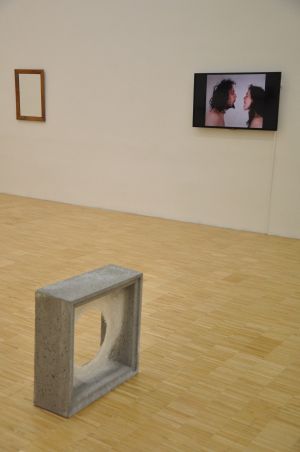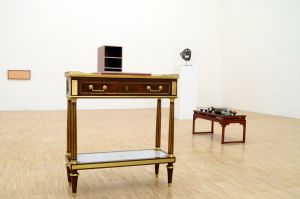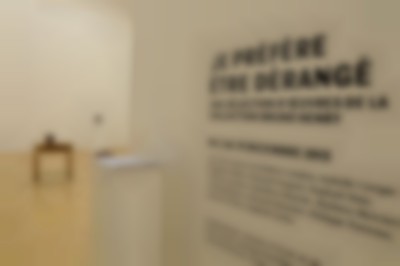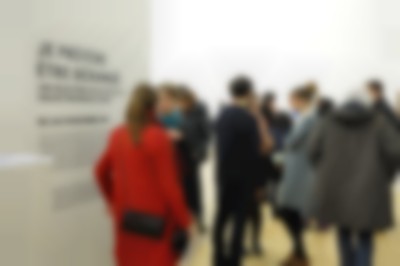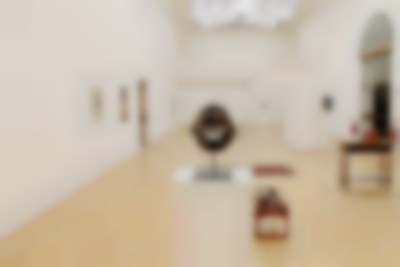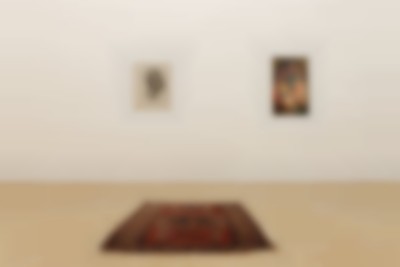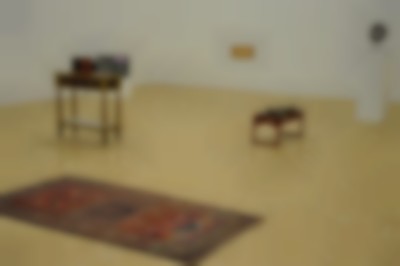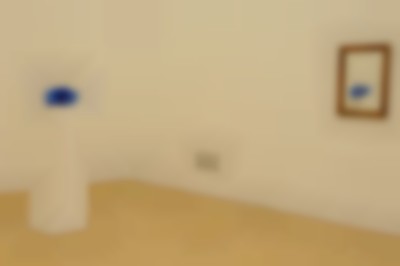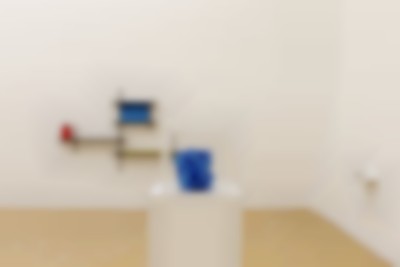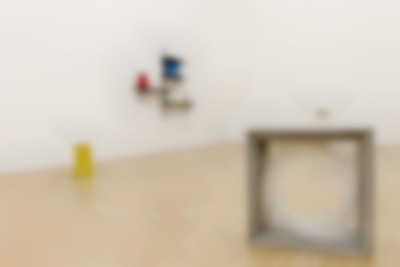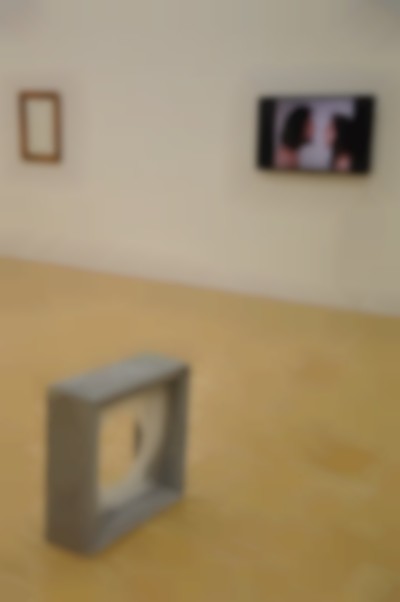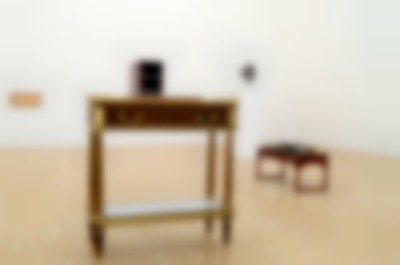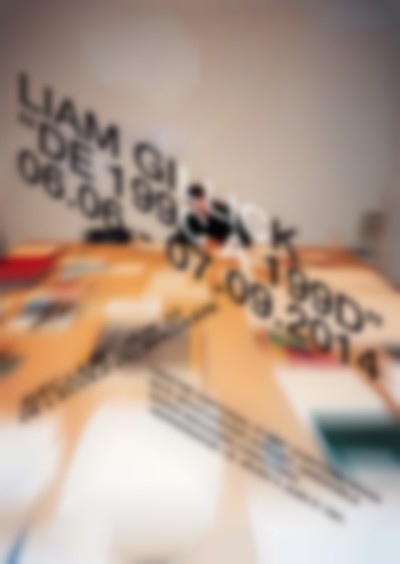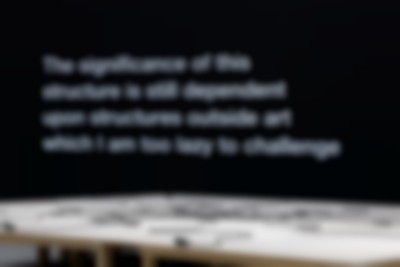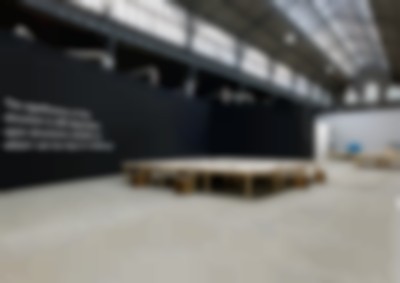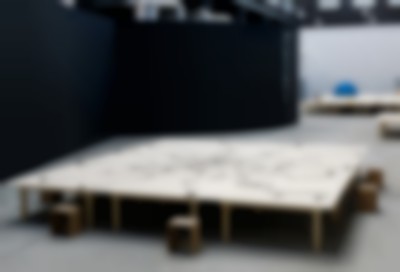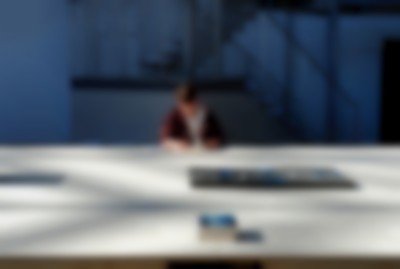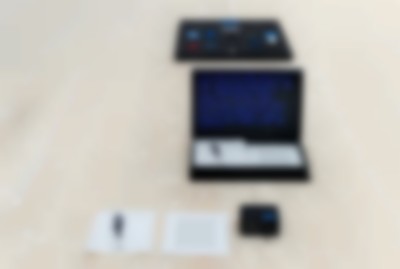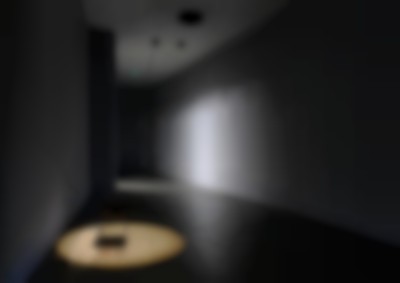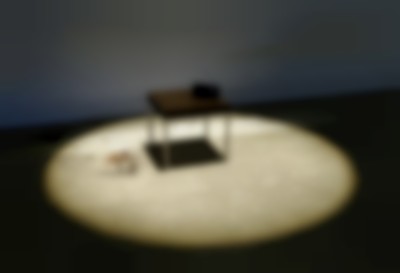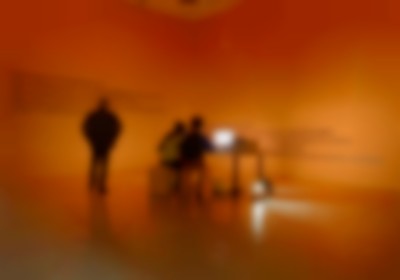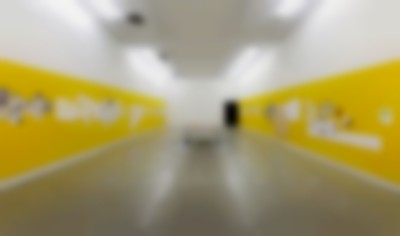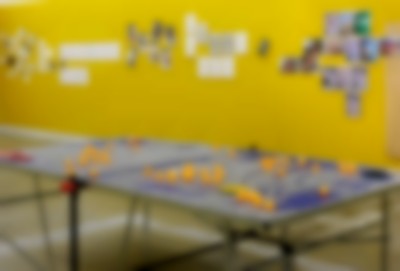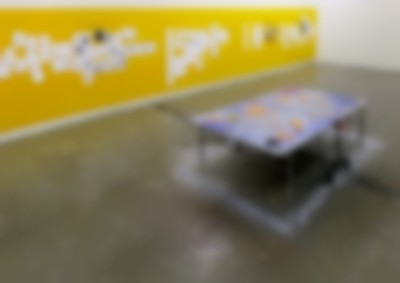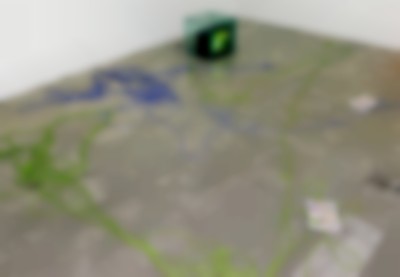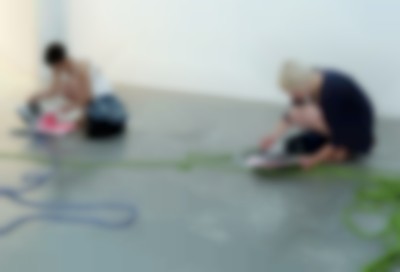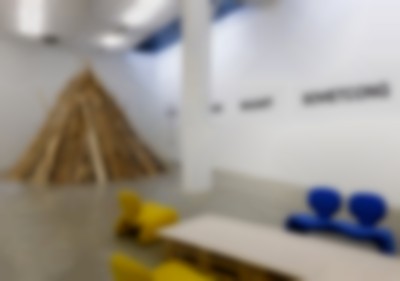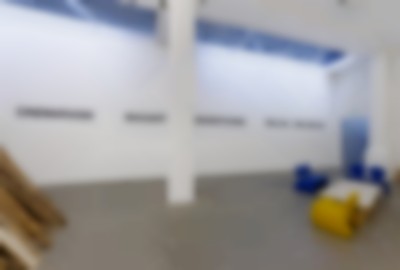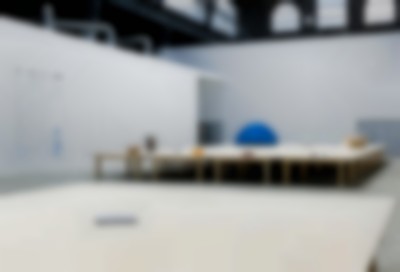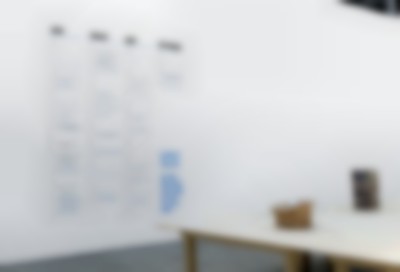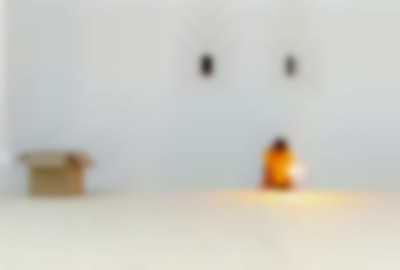Session 23: presentation
| Session | 23 (2013–2014) |
|---|---|
| Participants |
Claire Astier |
| Direction |
Yves Aupetitallot |
| Session website | |
| Coordination |
Quim Packard |
| Tutoring |
Caroline Soyez-Petithomme (only at the beginning of the year) |
| Educational team | – |
| People met |
Andrea Bellini (curator) |
| Travels |
Suisse (1–4 Oct. 2013) |
Related archive
Documents
- Presentation of the seminar on institutional critique (FR) [pdf, 60.36 KB]
- Report from the study trip in Switzerland 1-4 October 2013 (EN) [pdf, 86.01 KB]
- Report week 3–6 dec. 2013 (EN) [pdf, 110.87 KB]
- Program seminar with Helmut Draxler (EN) [pdf, 52.54 KB]
Media and links
- Interview with Dominique Gonzalez-Foerster (extract) [video]
- Interview with Florence Bonnefous (extract) [video]
- Interview with Yves Aupetitallot (extract) [video]
Photographs
Je préfère être dérangé
| Project |
Je préfère être dérangé |
|---|---|
| Presentation |
Je préfère être dérangé is an exhibition that describes the peculiar relationship between a collector and his collection, seen through the lens of six curators. As a case study, Bruno Henry and his collection have been examined according to this elective affinity that only the collector himself is capable of revealing. This unconventional relationship is considered as the necessary condition for the emergence of the artworks. |
| Format |
Exhibition |
| Date |
2–19 December 2013 |
| Location |
Gallery of the École nationale supérieure de Grenoble |
| With |
Robert Combas |
Related archive
Liam Gillick From 199A to 199D
| Project |
Liam Gillick From 199A to 199D |
|---|---|
| Presentation |
Liam Gillick, de 199C à 199D is an exhibition by British artist Liam Gillick whose initial form, From 199A to 199B Liam Gillick, has been presented at the Centre for Curatorial Studies at Bard College (New York) in 2012. As for the latter, the curatorial program of the École du MAGASIN collaborates in the realization of an exhibition that gathers a selection of the processes of its European works of the 1990s which will be reactivated. |
| Format |
Exhibiton |
| Date |
6 June – 7 September 2014 |
| Location |
Magasin-CNAC |
| With |
Liam Gillick |
Related archive
Documents
- Save the date [pdf, 76.13 KB]
- Press release (EN) [pdf, 552.76 KB]
- Communiqué de presse (FR) [pdf, 624.9 KB]
- Publication “Liam Gillick, de 199A to199D” [pdf, 5.2 MB]
- Outline by Liam Gillick (UK) [pdf, 11.02 MB]
- Exhibition booklet (FR/EN) [pdf, 8.84 MB]
Media and links
Photographs
-
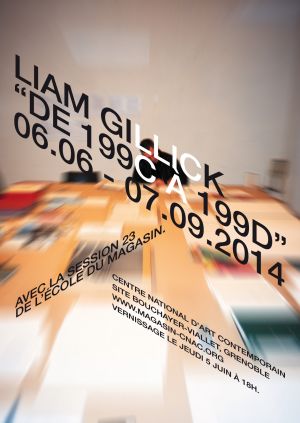
[2014]
Invitation card -
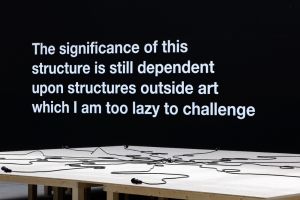
[2014]
Exhibition view -
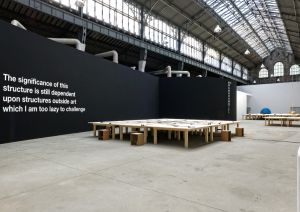
[2014]
Exhibition view -
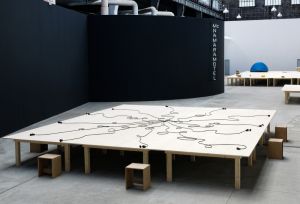
[2014]
Exhibition view -
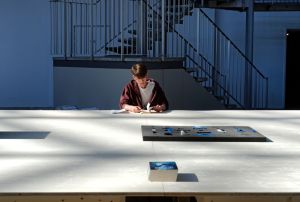
[2014]
Exhibition view -
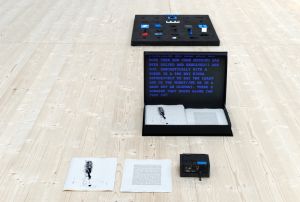
[2014]
Exhibition view -
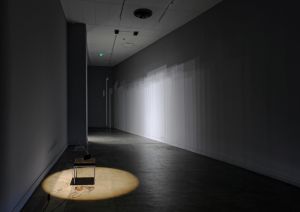
[2014]
Exhibition view -
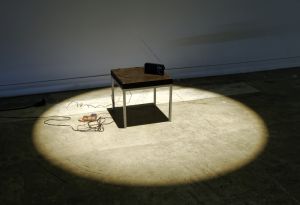
[2014]
Exhibition view -
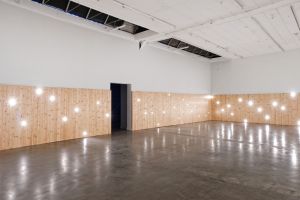
[2014]
Exhibition view -
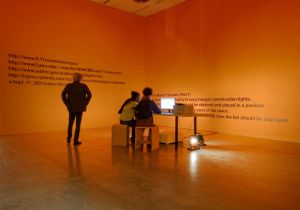
[2014]
Exhibition view -
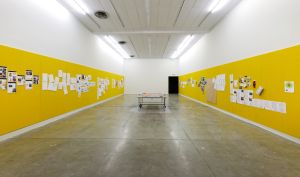
[2014]
Exhibition view -
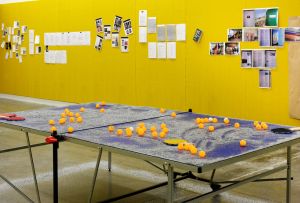
[2014]
Exhibition view -
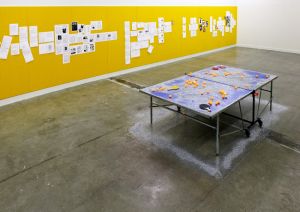
[2014]
Exhibition view -
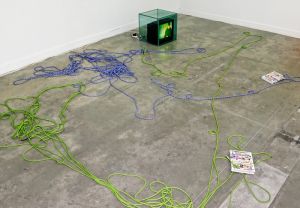
[2014]
Exhibition view -
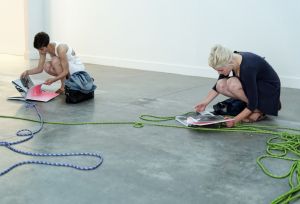
[2014]
Exhibition view -
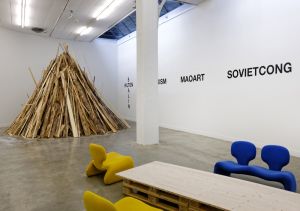
[2014]
Exhibition view -
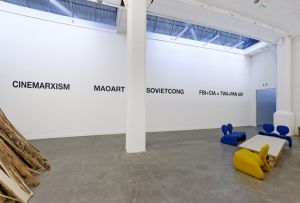
[2014]
Exhibition view -
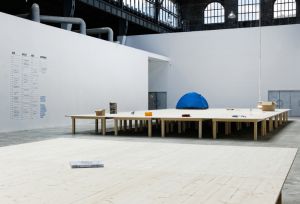
[2014]
Exhibition view -
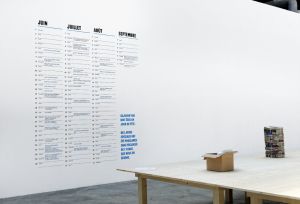
[2014]
Exhibition view -
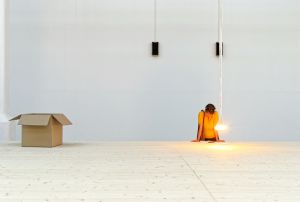
[2014]
Exhibition view
Interview with Neringa Bumblienė
Interview with Neringa Bumblienė
by Michela Alessandrini
03.04.2022
Michela Alessandrini: What prompted you to apply to the École du Magasin and what was your experience? What did you get out of it: not only in terms of knowledge but also as an experience? What do you remember?
Neringa Bumblienė: In 2011 and 2013 I curated the Lithuanian section of the biennale of young European artists “Jeune Création Européenne” held in Montrouge, Paris. There I met some interesting people whom I invited to come to Lithuania to do residencies and exhibitions at the institution I was working for at the time, and some of them became close friends. I was looking for a change in my career and some of them told me about the École and mentioned that it had a good reputation. So I decided to apply.
MA: What do you mean by “career change”? You were already working as a curator, weren’t you?
NB: Yes, I was already working as a curator at a contemporary art institution of about 1000 m2. It was located in the third largest city of the country: a port town by the sea, a very beautiful place. I worked there as a curator for three years before applying to the École. I applied as I was finishing my master’s degree in Curatorial studies at the Vilnius Academy of Fine Arts. Things were not going well with my former director and I was looking for options. So I applied to the École and I got accepted. There was only one question left to solve, which was related to funding: how to manage life in France for one year? And I was lucky enough to receive a grant from the French Institute in Lithuania, which allowed me to study for a year in France.
MA: So, you arrived in Grenoble. How old were you back then?
NB: I was 32 years old. I actually started my career as an interior designer in 2005 and five years later I moved into the art field. First I had my own artistic practice, then it somehow led to curating and finally I was invited to join a Lithuanian institution before I entered the École. So yes, I was already working as a curator and I had some contacts in France. I’ve already mentioned JCE biennale and there were some other projects that came out of it. I kept working on some of my curatorial projects while studying at the École.
MA: In my session, there were six women of different nationalities and ages. But I don’t think any of us were significantly more experienced than the others. I would say that we were more or less at the same level: was it the same for you?
NB: As I know, the Admission Committee of the École made some changes in the application process for our Session by requiring applicants to have a master’s degree. This naturally changed the age range and experience level of the applicants and I think that compared to your group ours was a bit older and more experienced. There was another colleague from the École, who was originally from Poland and also had some experience as a curator. Other participants did not have specific experience in curating but were experienced in related fields.
MA: How was the École for you? What was your experience throughout the nine months of the programme and what project did you work on?
NB: When we arrived, we were immediately offered to work on a major retrospective of Liam Gillick at the Magasin as a final project. I’m sure you are familiar with Gillick’s work.
MA: Of course! But it’s interesting. In our case, we were just told to sit there and think about a project that may or may not be an exhibition. We didn’t have an allocated space. We were given a carte blanche, which was extremely exciting but also problematic because it led to a lot of friction. How did it work out for you? You came in and had a clear commission – that should have made things easier.
NB: Well, we had a proposal to work with a very important and established artist, a guaranteed budget and a nice venue, which is already a lot. That said, the proposal was clear but the format was very open. Liam Gillick came early to visit us and he was very open and generous with us from the beginning. He explained that the core of the project was to do this exhibition in collaboration with students from a curatorial programme.
There were five of us in the group, all women from different parts of Europe, with different levels of experience and interests. I still remember having arguments because some members of the group didn’t want to do a Gillick’s exhibition. You know, even though we had a very clear and attractive proposal, part of the group was very suspicious and reluctant.
MA: Gillick did a similar project at the CCS Bard College before, right?
NA: Yes, he had already done a first part of this project at the CCS Bard College in New York. The framework was the same: working with students in a curatorial programme on his work from the 1990s. But we had some liberty to decide: what to show, how to do it, and how to talk about it and articulate it. Especially as his early work was rather experimental and closely related to socio-geopolitical realities of the 1990s. It occurred to us that if we simply repeated what he did in the 1990s, it would not make the same sense in 2014. So, although the idea was clear, things were also quite open and we had a lot of room to manoeuvre, taking our position and making decisions.
It is also important to mention that we had a few smaller projects throughout the year, including a group exhibition that we curated based on the collection of local collector Bruno Henry. We presented the exhibition in the beautiful and bright gallery of the art school in Grenoble. It was our first project done together, which allowed us to understand the dynamics within our group and to get to know each other better: who we are, what we think and how we work, what was important to each of us and what we were looking for. Then, there was a series of film screenings which also took place at the art school. But it was not compulsory and I did not participate. And besides the big Gillick’s exhibition, we also published a leaflet and created a website.
MA: There was also a movie project, wasn’t there?
NB: You’re right, you see, I am forgetting things… The exhibition was focused on Gillick’s work from the 1990s and at the time, in 2013-2014, there were very few publications and exhibitions covering that period. We didn’t have much material to work with conceptually and historically, so we decided to meet with artists, curators and gallerists with whom Liam Gillick worked closely in the 1990s. We compiled a list of about twenty people and managed to convince the École to support us in conducting a series of video interviews with them. It must be said that when we arrived at the École we had a tutor, Caroline Soyez-Petithomme, who had a rather particular way of working with us, which did not always convince me. Quite early in the year, she had an argument with Yves Aupetitallot, the director of the Magasin, and was dismissed as a result. So we were left without a tutor from the first stage, and the coordinator of the École was more of a friend and fellow. Anyway, for me it was a perfect framework: we had an institution to support us, but the framework was rather open for us to find our way and do things.
MA: Who was doing what? Did you have an internal organisation among yourselves?
NB: From the beginning we agreed that we would try to keep things horizontal. This meant that there would be no leader in the group and we would all share responsibilities. I have to admit that it was rather challenging, time-consuming and caused some arguments. But even though sometimes there were a lot of tensions in the group, there was also a very strong solidarity between us. We knew we had to do our best to make this horizontal approach work, and our determination and unity helped us to resist some of the external pressures.
MA: How much was the École involved in the development of the project? Was Yves Aupetitallot involved in the decision-making?
NB: Yves attended our weekly meetings and I think he had his own relationship with Liam, but for us it felt like being left alone with Liam Gillick, and I liked that very much because it gave us a lot of freedom of action. Of course, there was a structure behind the Magasin who made the exhibition possible with its communication, technical, accounting, and education teams. We had an impression of working as real curators in an art institution. And as is sometimes the case in institutions, there were some tensions and power dynamics.
Yves was not actively involved in the development of Liam’s exhibition and a few months before the opening, we had to issue the first press release. We wrote it and sign it with our names as curators because that was an important part of the project: the fact that we were student curators doing this project as part of a curatorial programme. And then the press release came out without our names. The text was changed and only Yves was mentioned as curator. We worked hard on the exhibition, we weren’t paid for this, and we took it pretty hard. Luckily Liam was in Arles at the time, as he was on the board of the LUMA Foundation. We informed him about what happened. He immediately came to visit us and met with Yves. They talked and the problem was solved. Our names and our text were restored.
MA: So, you felt accompanied by Liam Gillick throughout the project.
NB: Yes, absolutely. Naturally there was a certain power asymmetry between us young female students and him, a very famous artist. This raised some questions and tensions, but he did his best to keep the dialogue open, gave us our space and made sure that our voices were heard and our actions visible. This was very important for us and I am truly grateful to him. In fact, I am still in touch with him and after the École we worked together on some other wonderful projects.
MA: That’s really precious.
NB: At the time, some of my classmates were complaining about things, but I felt really lucky to have the opportunity to work in this setting and to have Liam’s support.
And then, because we were making this film on the 1990s, we also travelled around meeting lots of people, some of them very influential and interesting. They all welcomed us generously. We had a very strong feeling of being part of a family.
You know, I came to the École to broaden my knowledge and master my skills in the field, and I was genuinely happy to be given the chance to work with such an important artist and was grateful to him for making it such a pleasure. All the other problems and tensions were just a detail to me.
MA: What were they?
NB: Well, there were some fights and tensions. At the beginning of the year, for example, I got close to one of the students, Claire Astier. It was very inspiring to have long discussions with her, to learn more about French culture, about our differences and similarities. But then the relationship got complicated and I remember that at the end of the year, I left without even saying goodbye to her because she wasn’t speaking to me…
Despite all this, the nine months spent at the École felt a bit like a holiday, especially as I was having such a difficult time at home before coming. The École invited many inspiring people who came for lectures, workshops or openings, we travelled, spent time together, read, discussed, reflected a lot. It was fun and it opened my mind to different perspectives. I met some great people, including Pierre Huyghe, whose work I am currently working on presenting. I was really happy to be there.
MA: From what I understand, it was a reboot moment for your career. You were already a curator, but it gave you a break, a chance to step back from what you were doing and look at the bigger picture.
NB: Absolutely. I remember that two or three weeks after our arrival in Grenoble, we were sent on a study trip to Switzerland. We met very important curators like Beatrix Ruf or Andrea Bellini, and we exchanged with them about their daily work and their visions. This gave me a better understanding of the role of a curator and helped shaping the way I want to work in this field.
MA: Did you have workshops with curators visiting the École?
NB: There was a programme with the art school on certain topics but it wasn’t compulsory. And there were a series of workshops closely related to our project. For example, there was a workshop with Fabrice Stroun, who was the director of the Kunsthalle in Bern at the time. We also had a workshop with Andrea Bellini, director of the Contemporary art Centre in Geneva. There were workshops we shared with the art students.
MA: What was your interaction with the art students?
NB: There was already a link between the École and the art school. At the time, the École was trying to strengthen this link so that the participants could receive a student status and some kind of diploma. But nothing was established and they were experimenting with different settings. We were invited to participate in different activities of the art school. But nothing was compulsory, as I said before. There was this workshop organized by Simone Frangi related to institutional critique. We were also invited to participate in open studios to meet the art students.
MA: As you may know, there is a new director at Le Magasin and she is considering to relaunch the programme of the École. I wanted to ask you what a curatorial programme in Grenoble might mean today when there are so many already? And what should we retain from what we have known before?
NB: Oh, I didn’t know they were considering to reopen it… Of course, there are many curatorial courses in the world, but most of them are rather expensive. On the contrary, L’École du Magasin had a very good reputation, a rich history and was free. I think this is very important in the art field, which is already precarious in many ways. Also, the École was very well-known and very experimental. It was not a school in the traditional sense, it functioned more as a platform to work, to find and define a position as a young curator. At least for me, it opened so many doors that would have been difficult to go through otherwise. And it provided valuable contacts and experiences. I think it would be great if it continued.



